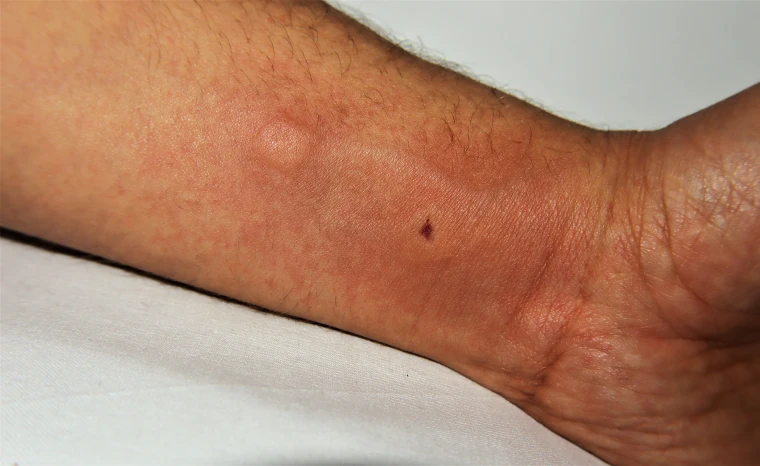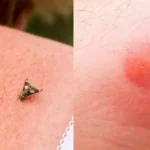
Skincare hacks are everywhere these days, and one trending question has people reaching for their pimple patches when mosquitoes strike: do pimple patches help bug bites?
From TikTok to Reddit, people swear by using hydrocolloid patches on everything from spider bites to mosquito welts. But does the science back up the hype?
In this comprehensive guide, we’ll explore the effectiveness of pimple patches on bug bites, uncover the pros and cons, and reveal better alternatives for instant itch relief.
How Pimple Patches Actually Work
Before diving into whether bug bite hydrocolloid patches are effective, let’s understand what these patches do. Pimple patches are typically made from hydrocolloid material, originally developed for wound care in medical settings.
Key Functions of Hydrocolloid Patches:
- Fluid absorption: The hydrocolloid material absorbs pus, oil, and other fluids from blemishes
- Barrier protection: Creates a sealed environment that prevents bacteria and dirt from entering
- Moist healing: Maintains optimal moisture levels for faster skin repair
- Physical barrier: Stops you from picking or touching the affected area
The patches work by creating a slightly acidic, moist environment that encourages healing while drawing out impurities. But can this same mechanism help with insect bites?
Scientific Logic: Bug Bites vs Pimples
Understanding the difference between pimples and bug bites is crucial to determining if patches can help both conditions.
How Pimples Form
Pimples develop when pores become clogged with oil, dead skin cells, and bacteria. The inflammatory response creates pus-filled bumps that benefit from fluid extraction and barrier protection.
How Bug Bites React
Bug bites trigger an immediate immune response to foreign proteins injected by insects. This causes:
- Histamine release leading to itching and swelling
- Inflammation without bacterial infection (in most cases)
- Fluid accumulation under the skin
- Redness and heat from increased blood flow
The Connection: While the underlying causes differ, both conditions involve inflammation and fluid accumulation. This is where pimple patches for itching bug bites can potentially provide some relief.
Pros of Using Pimple Patches on Bug Bites
There are several legitimate reasons why people find success using hydrocolloid patches on insect bites:
1. Prevents Secondary Infection
The biggest benefit is creating a sterile barrier. When you scratch bug bites, you risk introducing bacteria that can lead to secondary infections. The patch acts as a protective shield.
2. Reduces Scratching Temptation
Physical coverage makes it nearly impossible to scratch the bite, breaking the itch-scratch cycle that often makes bug bites worse and prolongs healing.
3. Manages Fluid and Swelling
For bites that develop fluid-filled bumps or mild swelling, the hydrocolloid material can absorb excess fluid and potentially reduce the size of the bump.
4. Provides Cooling Relief
The patch can provide a slight cooling sensation when first applied, offering temporary comfort from itching and burning sensations.
Best Results: Patches work most effectively on fresh, small bug bites before significant swelling develops. Apply them within the first few hours for optimal benefits.
Limitations & Common Misconceptions
While patches can provide some benefits, it’s important to understand their limitations when treating bug bites:
Reality Check: Pimple patches are not specifically designed for bug bites and won’t address the root cause of itching and inflammation.
They Don’t Contain Antihistamines
Unlike dedicated bug bite treatments, pimple patches don’t contain ingredients like hydrocortisone or antihistamines that directly combat the immune response causing itching.
Limited Effectiveness on Severe Reactions
For large, swollen bites or allergic reactions, patches simply can’t address the systemic inflammatory response. They’re purely a topical, mechanical solution.
Won’t Work for All Bite Types
Different insects cause different reactions. Patches may help mosquito bites but be less effective for bee stings, ant bites, or spider bites that require different treatment approaches.
Temporary Solution at Best
While patches can provide short-term relief, they don’t speed up the actual healing process like purpose-made treatments do.
Better Alternatives for Bug Bite Relief
If you’re dealing with itchy, inflamed bug bites, consider these more targeted solutions:
Proven Topical Treatments
- Calamine lotion: Provides cooling relief and helps dry out weeping bites
- Hydrocortisone cream: Reduces inflammation and itching with anti-inflammatory properties
- Aloe vera gel: Natural cooling and anti-inflammatory effects
- Cold compress: Numbs the area and reduces swelling immediately
Modern Solutions
- Bug bite suction tools: Remove irritants and reduce swelling mechanically
- Antihistamine creams: Target the histamine response directly
- Menthol-based treatments: Provide cooling sensation that interrupts itch signals
Combination Approach: You can use a pimple patch AFTER applying a topical treatment like hydrocortisone cream. This gives you both active ingredient benefits and scratch protection.
The Bottom Line: Are Pimple Patches Worth It for Bug Bites?
The verdict on do pimple patches help bug bites is nuanced. They’re not a miracle cure, but they’re not completely useless either.
Pimple patches work best for bug bites when:
- You have a history of scratching bites and making them worse
- The bite is small, fresh, and not severely inflamed
- You’re using them as part of a broader treatment approach
- You need a quick, convenient solution and don’t have dedicated bug bite treatments available
Skip the patches and choose dedicated treatments when:
- You’re dealing with large, swollen, or multiple bites
- The bite shows signs of allergic reaction
- You have access to purpose-made bug bite treatments
- The bite is from a potentially dangerous insect like a tick or brown recluse spider
Final Recommendation: While bug bite hydrocolloid patches can provide modest benefits, they’re best viewed as a supplementary tool rather than a primary treatment. For optimal results, combine them with proven anti-itch treatments.
Frequently Asked Questions
Hydrocolloid patches can indirectly reduce itching by preventing scratching and absorbing some fluid, but they don’t contain active anti-itch ingredients like antihistamines or hydrocortisone. The relief is primarily mechanical rather than chemical.
Look for thin, transparent hydrocolloid patches that won’t be too noticeable. Avoid patches with active ingredients designed for acne (like salicylic acid) as these can irritate already inflamed bug bite skin. Simple, medical-grade hydrocolloid works best.
Leave the patch on for 6-12 hours or until it turns white/opaque from absorbed fluid. Don’t leave it on for more than 24 hours, as prolonged occlusion can sometimes worsen inflammation or cause skin irritation.
Patches work best on common mosquito and flea bites. Avoid using them on bee stings, wasp stings, or bites from potentially dangerous spiders, as these require specific medical treatments. Also avoid patches on bites showing signs of severe allergic reaction.
🔍 Explore the Full Breakdown
Pimple Patches for Bug Bites – Relief or Just Hype? Get the complete analysis with scientific studies, expert opinions, and detailed treatment comparisons.
 Shop Amazon
Shop Amazon

